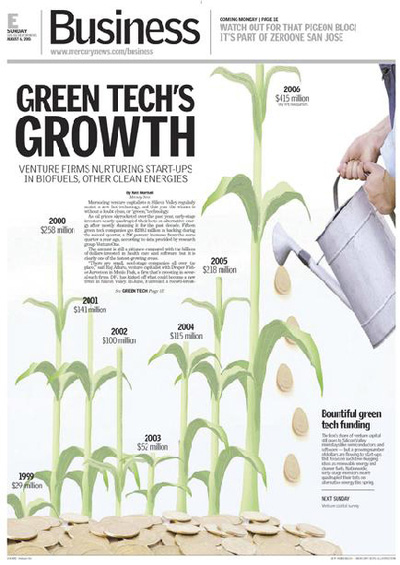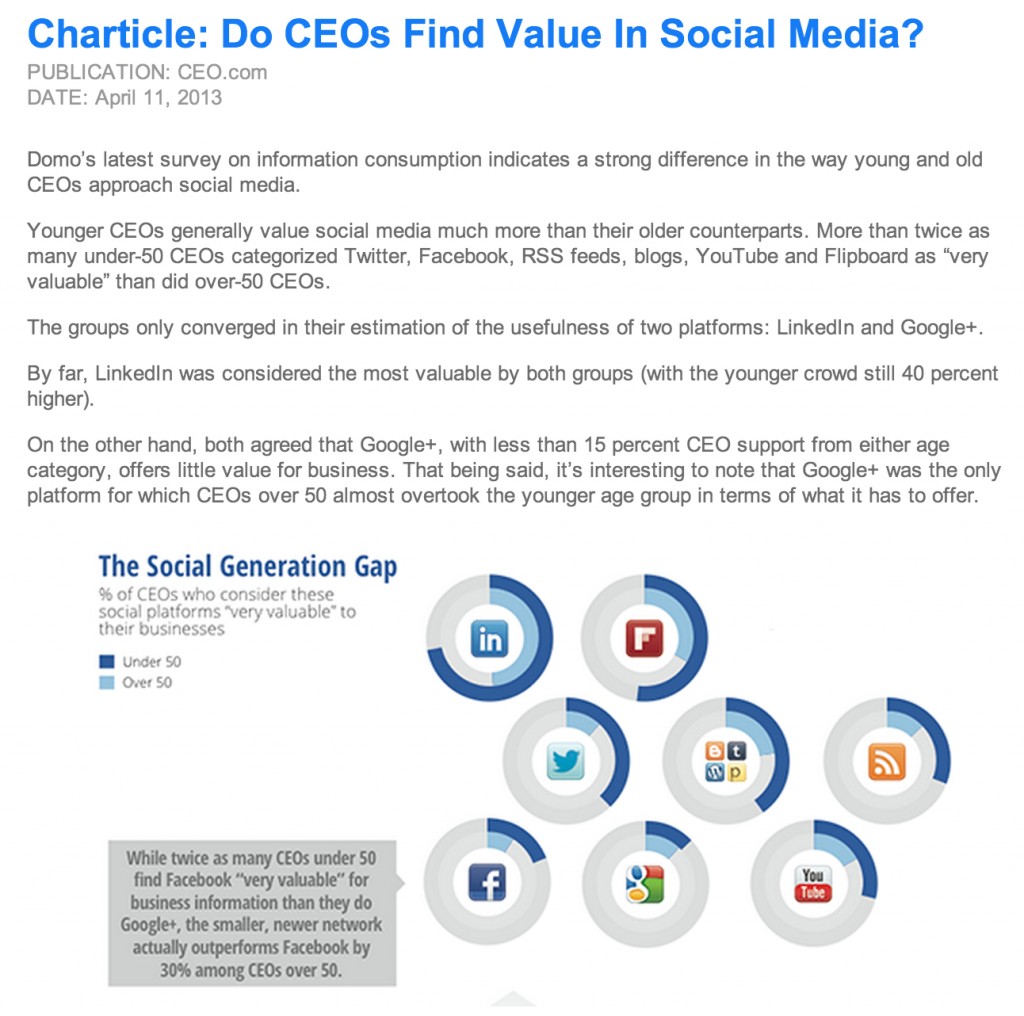Normally when some travesty occurs in the world of content or journalism, it’s the bloggers that get the blame. In the case of one of my favorite forms of content, it’s actually the journalists who get the nod for instigating the content form currently known as the ‘charticle.’ Actually, it’s even more convoluted than that, as no one knows the true origin of the charticle but I’m thankful to them, whoever they are.
One has to look no further than the pages of a USA Today to see just how the charticle has taken its rightful place as a journalistic vehicle for today’s time and attention-starved news consumers. A few minutes with quick visual coupled with scannable text and we know just about everything going on in the world. In fact, some writing sites even advise would-be writers to skip the feature article and submit a quick-impact charticle for consideration.
What is a Charticle?
Charticles – as defined by Omaha World-Herald Deputy Presentation Editor Josh Crutchmer – are combinations of text, images and graphics that take the place of a full article. They are often used by bloggers and journalists alike to express one big idea with a bit of narrative provided by the supporting text that follows or sets up the big visual or chart that’s usually the feature in the post. In many cases, the chart featured in the charticle could likely stand on its own, as in, the data is typically that compelling. Moreover, that’s also what makes it worth writing about. The charticle is singular in focus and offers a great opportunity for expressing a succinct thought leadership point of view on a relevant bit of data.
Bite-sized combinations of words, images and graphics called charticles are in vogue at a number of American newspapers. And they are not necessarily the enemy of compelling narrative.
– Dane Stickney, AJR
What Do Charticles Look Like?
Charticles come in a few shapes and sizes, but most of them follow this format:
Here’s one that Google Images pops up with when you do a quick search on charticles:
Here’s one that actually generated the idea for this blog post:
Do Charticles Work?
We’re really moving away from the model in which visualization or interactive storytelling is an afterthought, an illustration of the story, and toward a model in which this work is central to developing the story and enables us to tell the story in ways impossible for straight text reporting.
– Associated Press’ interactive editor, Troy Thibodeaux
Actually, there is data suggesting that they do work and are more effective for conveying information that the audience will actually remember. The Poynter Institute has done several years of research as part of their EyeTracking study and have found that “earlier EyeTrack studies and other research that short text, especially with visual elements, is accessible and attractive to readers.”
Moreover, Poynter found that the presence of a visual alongside a brief (short bit of text in a newspaper), in print, increased its likelihood of being seen by more than 34% above what we would expect, based on the number available to be seen. This parlays into research that we have on adding images to webpages on B2B sites. Visuals boost the impact of content.
Readers like charticles, readers react to charticles and readers have a slightly higher recall rate of the material presented in charticles, especially because they take in the bulk of the story, unlike longer text articles where the ‘reading depth’ decreases substantially as the story gets longer.
Why Use Charticles for Thought Leadership Marketing Content?
Personally, I’m a huge fan of the charticle for thought leadership and content marketing for a few reasons:
1) For thought leadership, it’s a perfect opportuntiy for you to take a snapshot of information from a current issue in the industry and both hightlight it, and offer your unique point of view on the topic rapid fashion. Thusly, you leave your readers both informed about the information and impacted by your unique insights.
2) It meets the needs of our audience. One has only to look at the power of infographics to see that sharing visualized data is a powerful communication means. The rise of visual social media and one-page viewing on mobile devices makes the charticle a potentially ideal way to deliver one idea in one page.
3) They’re easy to produce easy to share. The burden on the author is minimal, as you’re only creating narrative to go along with a chart. Moreover, a charticle may likely be more shareable than, say, a full whitepaper on a topic. The reader believes that the sharer is considerate for sending just the essential information, likely one page, that’s depicted in the average charticle.
What Makes for a Good Charticle?
1) Impart information, not tell a story – If you’re looking to persusade with prose, the charticle is not your vehicle. Charticles work well when the subject you are discussing or question you are answering is purely informational in nature.
2) It consolidates information – Even an infographic may be too much information for the average charticle. Most include a single major argument supported by several datapoints, but not several arguments supported by many datapoints. A great example is the charticle referenced above on CEOs and finding value in social media.
3) A storytelling graphic with on-point narrative – The value of the charticle is that is gets your thought leadership point-of-view across quickly and gets your reader on their way. Ideally, when the chart and the narrative work together, you’ve created a highly informative and shareable piece of content that they can glance at, pick what they want out of it, and get out.
When to Use a Charticle in Thought Leadership and Content Marketing
1) One of the best applications for Charticles is to help ‘atomize’ content from a heavy content item like a whitepaper or research report. In fact, nearly every chart or visual in a whitepaper, e-book or reserach report should be considered for a charticle. A research report, like the recent CEO Information Consumption report mentioned above, can easily have 6-8 charticle opportunities that can both engage your readership while driving them toward conversion when they download the document.
2) Charticles also work well when you’re curating third-party data points into your site and overlaying your unique point of view on the topic. If there’s an interesting datapoint from a report in your industry that you want to expand on, the charticle is a great way to pull in that information while offering your audience your perspective on it.
There are likely myriad other ways to use charticles. Please share your most interesting perspective in the comments!
Question: How can you leverage the natural behavior of online readers and incorporate the ‘charticle’ into your thoguht leadership content strategy?
Learn more: Every thought leadership and content marketer should read Poynter’s EyeTracking study on how people actually consumer news information. There are some evergreen concepts here that will work for you whether you’re blogging, writing a whitepaper or creating your next email marketing campaign.

